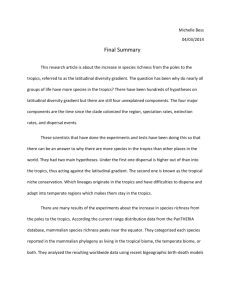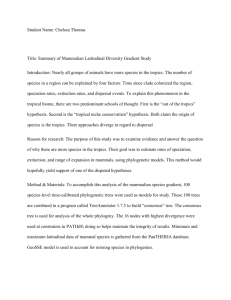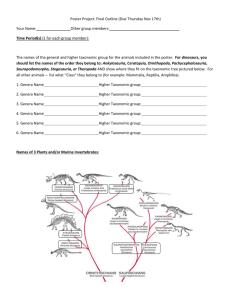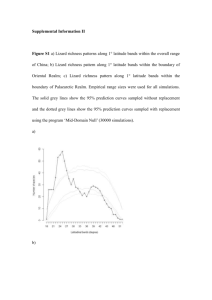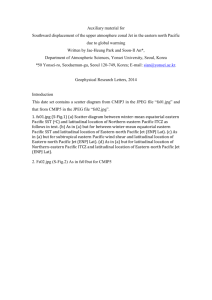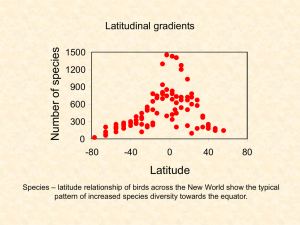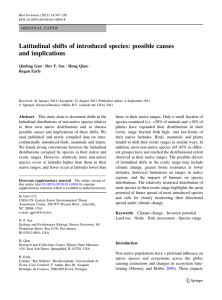divgradient_exercise
advertisement
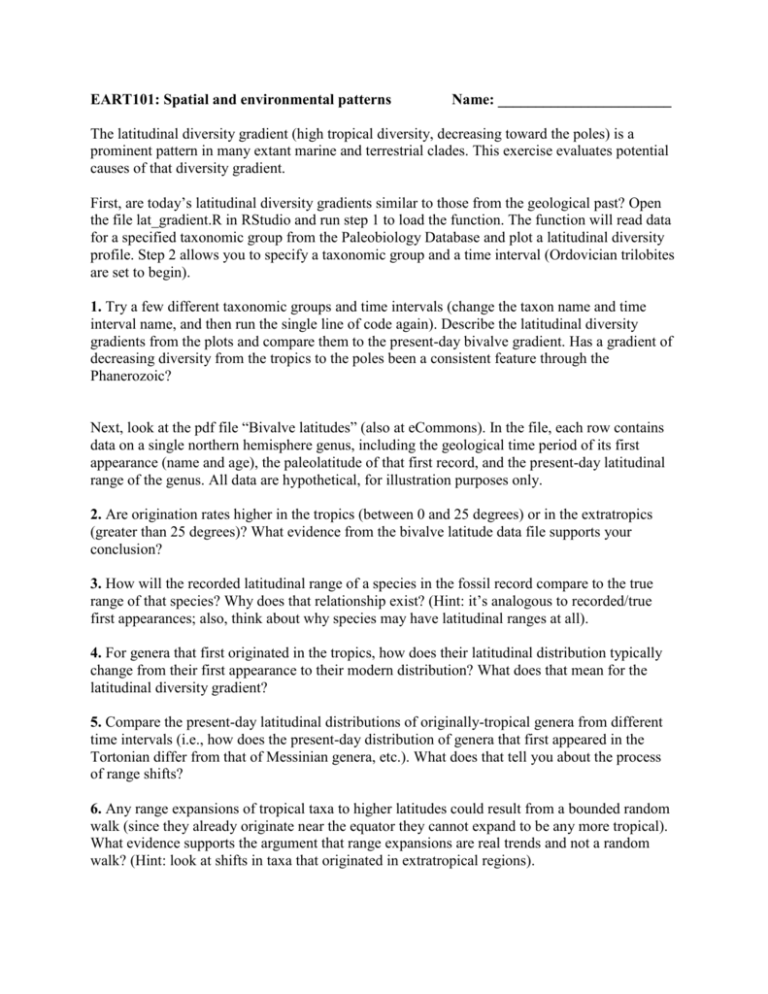
EART101: Spatial and environmental patterns Name: _______________________ The latitudinal diversity gradient (high tropical diversity, decreasing toward the poles) is a prominent pattern in many extant marine and terrestrial clades. This exercise evaluates potential causes of that diversity gradient. First, are today’s latitudinal diversity gradients similar to those from the geological past? Open the file lat_gradient.R in RStudio and run step 1 to load the function. The function will read data for a specified taxonomic group from the Paleobiology Database and plot a latitudinal diversity profile. Step 2 allows you to specify a taxonomic group and a time interval (Ordovician trilobites are set to begin). 1. Try a few different taxonomic groups and time intervals (change the taxon name and time interval name, and then run the single line of code again). Describe the latitudinal diversity gradients from the plots and compare them to the present-day bivalve gradient. Has a gradient of decreasing diversity from the tropics to the poles been a consistent feature through the Phanerozoic? Next, look at the pdf file “Bivalve latitudes” (also at eCommons). In the file, each row contains data on a single northern hemisphere genus, including the geological time period of its first appearance (name and age), the paleolatitude of that first record, and the present-day latitudinal range of the genus. All data are hypothetical, for illustration purposes only. 2. Are origination rates higher in the tropics (between 0 and 25 degrees) or in the extratropics (greater than 25 degrees)? What evidence from the bivalve latitude data file supports your conclusion? 3. How will the recorded latitudinal range of a species in the fossil record compare to the true range of that species? Why does that relationship exist? (Hint: it’s analogous to recorded/true first appearances; also, think about why species may have latitudinal ranges at all). 4. For genera that first originated in the tropics, how does their latitudinal distribution typically change from their first appearance to their modern distribution? What does that mean for the latitudinal diversity gradient? 5. Compare the present-day latitudinal distributions of originally-tropical genera from different time intervals (i.e., how does the present-day distribution of genera that first appeared in the Tortonian differ from that of Messinian genera, etc.). What does that tell you about the process of range shifts? 6. Any range expansions of tropical taxa to higher latitudes could result from a bounded random walk (since they already originate near the equator they cannot expand to be any more tropical). What evidence supports the argument that range expansions are real trends and not a random walk? (Hint: look at shifts in taxa that originated in extratropical regions). Finally, open the data file “Bivalve ages.” This file contains the geological duration (time in millions of years since its origination) for extant bivalve genera. The geographic distribution (tropical, extratropical, or both) is also indicated for each genus. All data are hypothetical, for illustration purposes only. 7. What does the distribution of taxon ages tell you about extinction rates in the tropics vs. the extratropics? Support your answer with reference to the data. How could that contribute to the formation of the latitudinal diversity gradient? 8. Some of the longest-lived genera are found in both tropical and extratropical regions. How do you think they maintain a presence in the extratropics given the extinction rate in that region?
